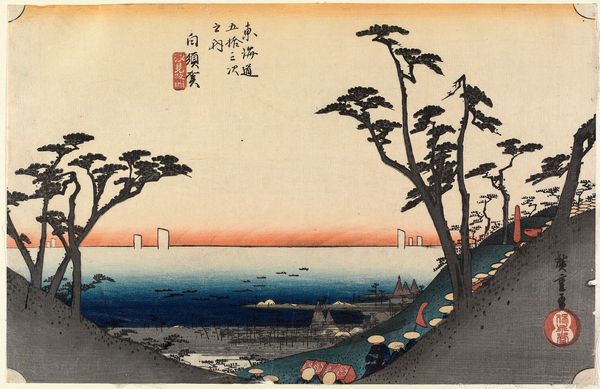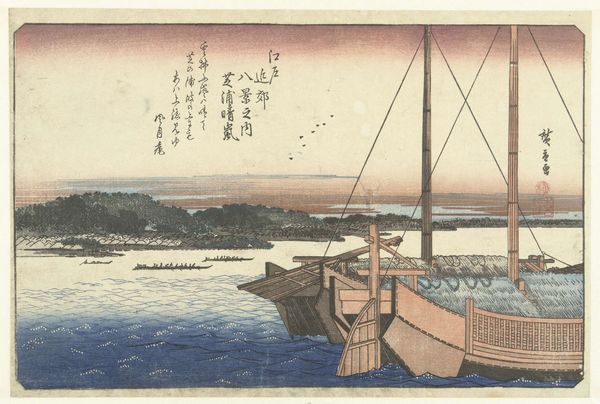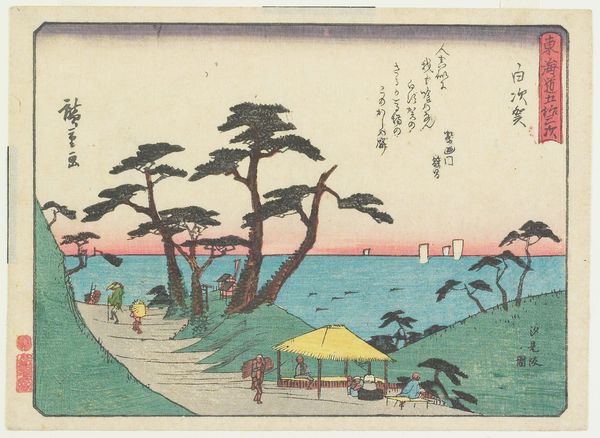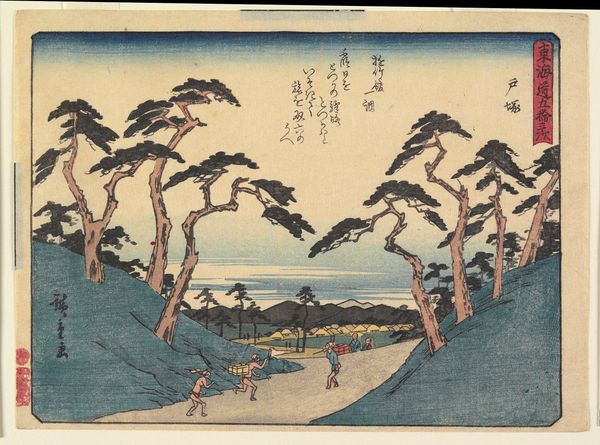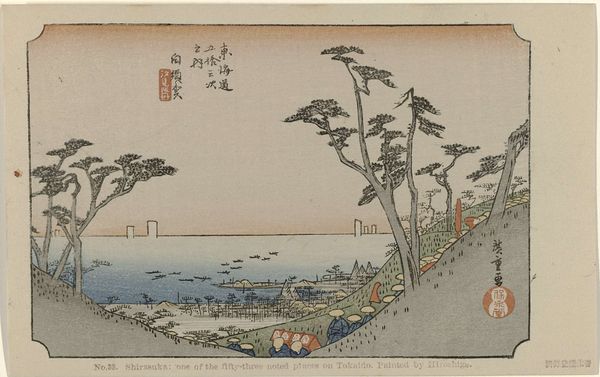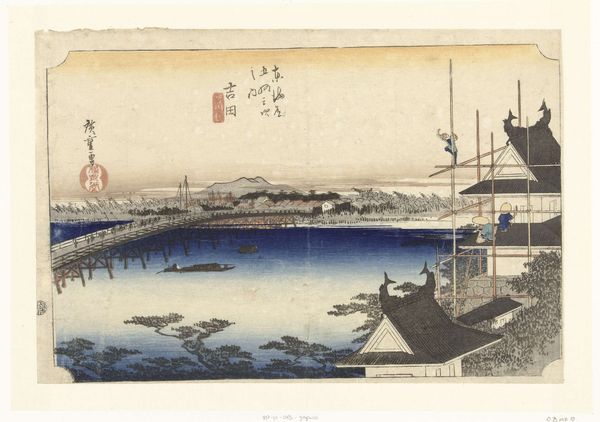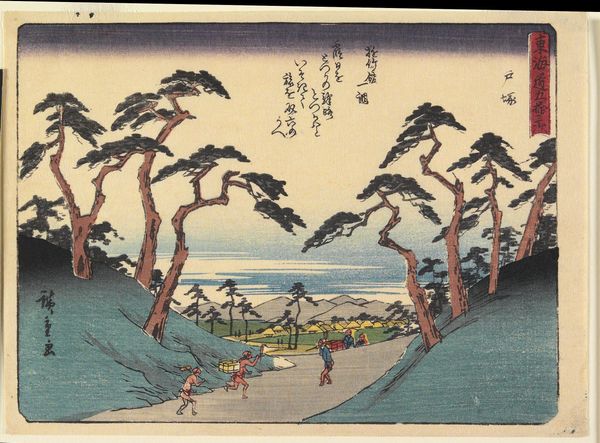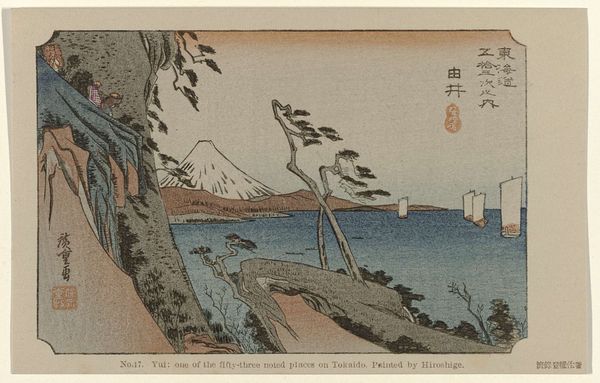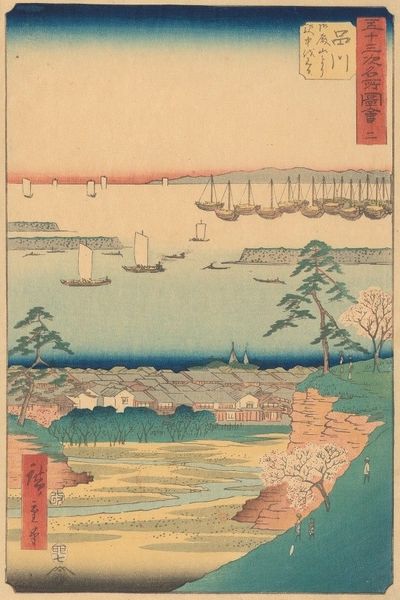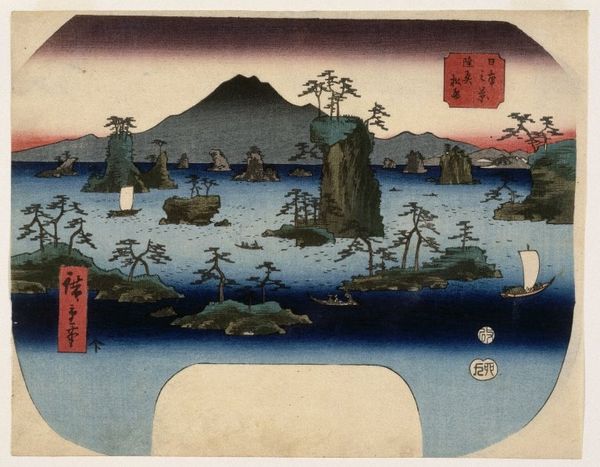
print, woodblock-print
# print
#
asian-art
#
landscape
#
ukiyo-e
#
woodblock-print
#
watercolour illustration
Dimensions: height 250 mm, width 379 mm
Copyright: Rijks Museum: Open Domain
Curator: This is "Shirasuka, bergafwaarts," a woodblock print by Utagawa Hiroshige, created sometime between 1828 and 1835. It's part of the collection here at the Rijksmuseum. Editor: Immediately, I’m struck by the peaceful feeling of this landscape. The gradation of color in the sky suggests dawn or dusk. It’s very still. Curator: Yes, Hiroshige has this amazing ability to evoke a mood with such simple means. Let’s think about those "simple means" a little, though, eh? This isn't simple! It's a painstakingly produced color woodblock print – *nishiki-e* – from a design carved by hand. It probably took a workshop of skilled artisans to make. We shouldn't overlook the human labor baked into its design! Editor: A good point. There’s so much skill involved. Look at how the perspective is handled, subtly drawing the eye into the distance. And those almost stylized pine trees! Curator: To me, they’re reaching toward something…or maybe shielding the travelers trudging down the hill? This piece is from "Fifty-three Stations of the Tōkaidō" series, which depicts the road between Edo (now Tokyo) and Kyoto, if you'd believe. The path was not merely an itinerary, of course: the journey signified connection, governance, and ritual obligations between the Tokugawa shogunate and its domains. Editor: You can see the travelers winding down that path, almost as miniature details…their figures emphasize the scale of the landscape, maybe their small place in the world. Curator: Or how even powerful shogunates and daimyos depend upon their labor for such endeavors. You see, there's a bit of material history peeking out from under even this rather picturesque vista. And as for its influence...consider Japonisme, and how artists in the West were madly collecting prints like these and incorporating their flattened perspectives into their own art. It sparked whole movements. Think of Van Gogh and his "Japaneserie" paintings. Editor: Fascinating to consider that exchange – East influencing West so profoundly. The print manages to be both a tranquil scene and a powerful cultural artifact at once. Curator: Exactly! Next time I look at it, I'll try to recall all those unknown hands that carved it and passed it around. So much art history focuses on artistic authorship, while art is always such a deeply collective endeavor!
Comments
No comments
Be the first to comment and join the conversation on the ultimate creative platform.
